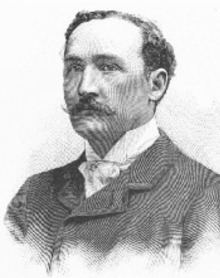Nationality French Name Henry La | Role Author | |
 | ||
Full name Comte Henry de La Vaulx Born 2 April 1870Bierville, France ( 1870-04-02 ) Cause of death accident in New York state Resting place Castle Rozoy-Bellevalle.48°55′25″N 3°27′22″E / 48.923611°N 3.456111°E / 48.923611; 3.456111 Monuments File:Tombe-La Vaulx.jpg Known for cofounder of Aero Club of France, 1898;cofounder of FAI, 1905 Died April 18, 1930, New York, United States | ||
Henry de La Vaulx (1870–1930), was a balloonist, author, and cofounder of major French and international aeronautical associations.
Contents
Biography
He was born in Bierville, France on April 2, 1870.
From March 1896 to May 1897 he stayed with native tribes in Patagonia, and later wrote a book about this experience.
In 1898, he co-founded the Aero Club of France with Ernest Archdeacon, Léon Serpollet, Henri de la Valette, Jules Verne, Honorine de Viane Morel Verne, André Michelin, Albert de Dion, Alberto Santos-Dumont, and Henry Deutsch de la Meurthe.
On Oct 9, 1900 he and a companion set a distance record in a balloon traveling 1200 miles from Vincennes, France to Korostishev near Kiev, Ukraine in 35.75 hours. Also in 1900 he received the Grand Medal of the Aero Club of France for exceptional contributions to the progress of aviation.
In 1905 he cofounded and became a director of the Fédération Aéronautique Internationale (FAI). The FAI now awards the De la Vaulx Medal, named for him. He visited the United States several times for ballooning ventures and the New York Times described him as one of the "most successful and daring balloonists in the world."
He developed airships for the Zodiac company.
He published a dozen books, mostly on aviation.
He lived in the castle Rozoy-Bellevalle.
He died on a demonstration flight between Albany and New York City on April 18, 1930 and was buried in the Rozoy-Bellevalle cemetery.
